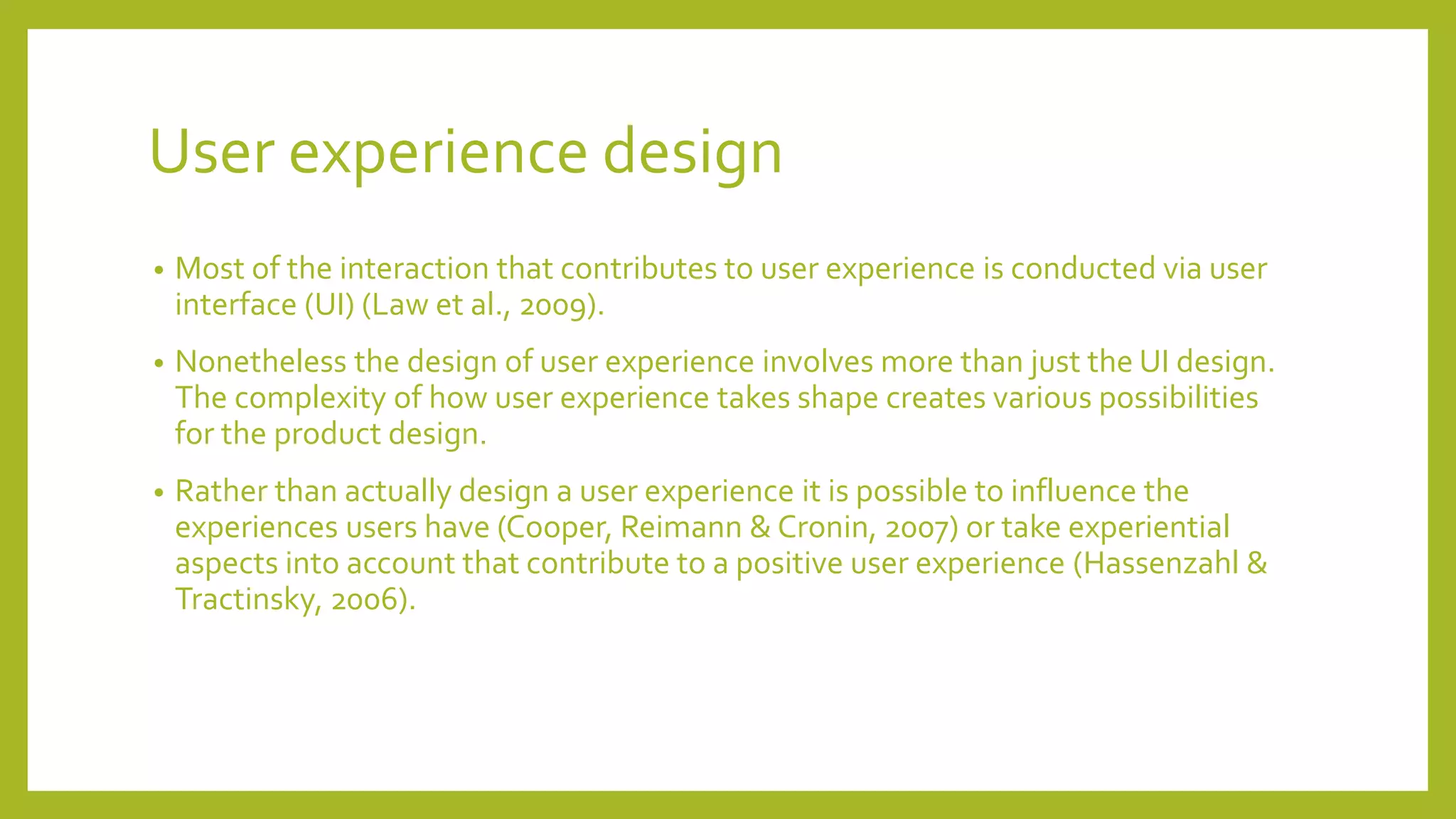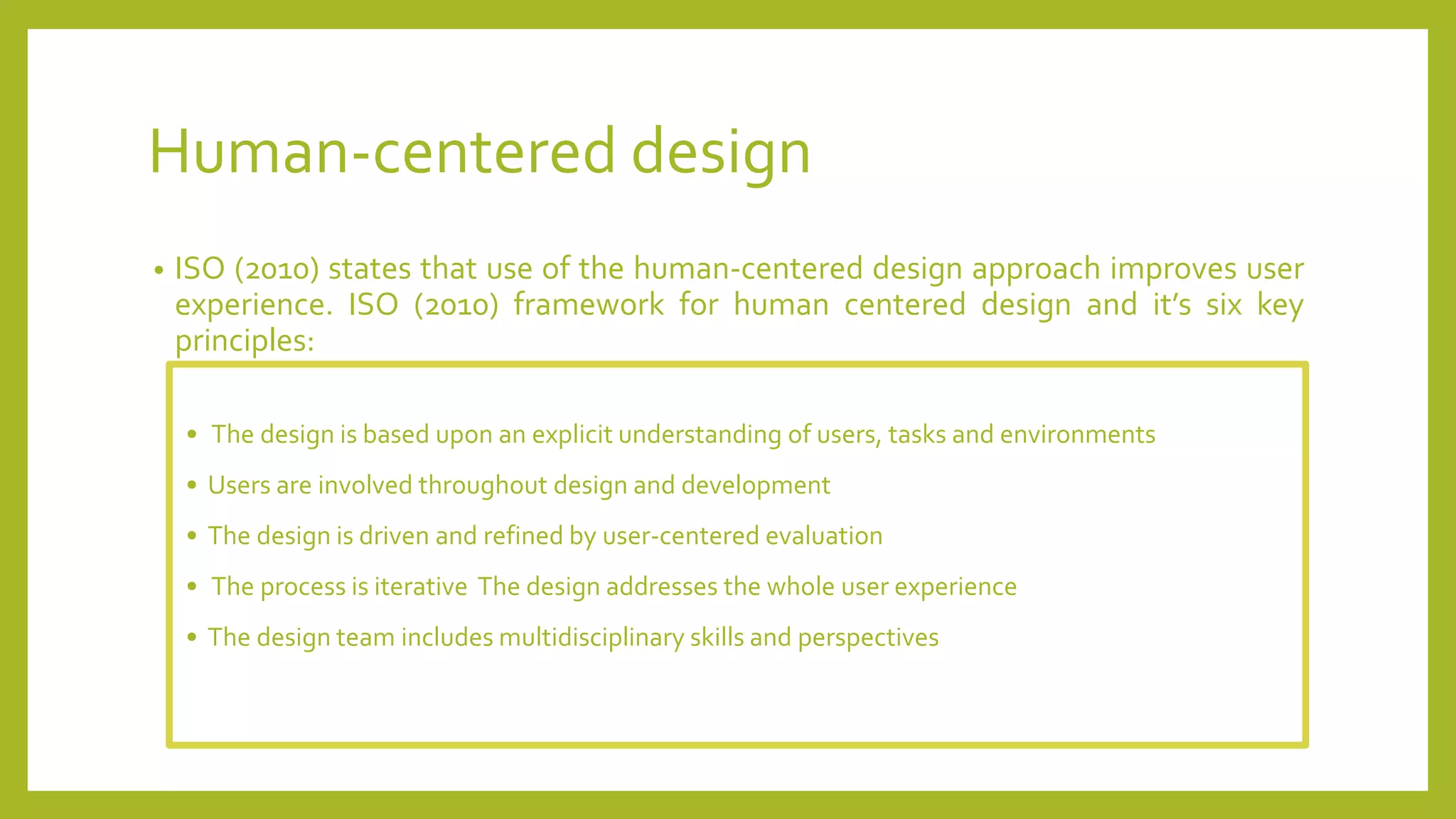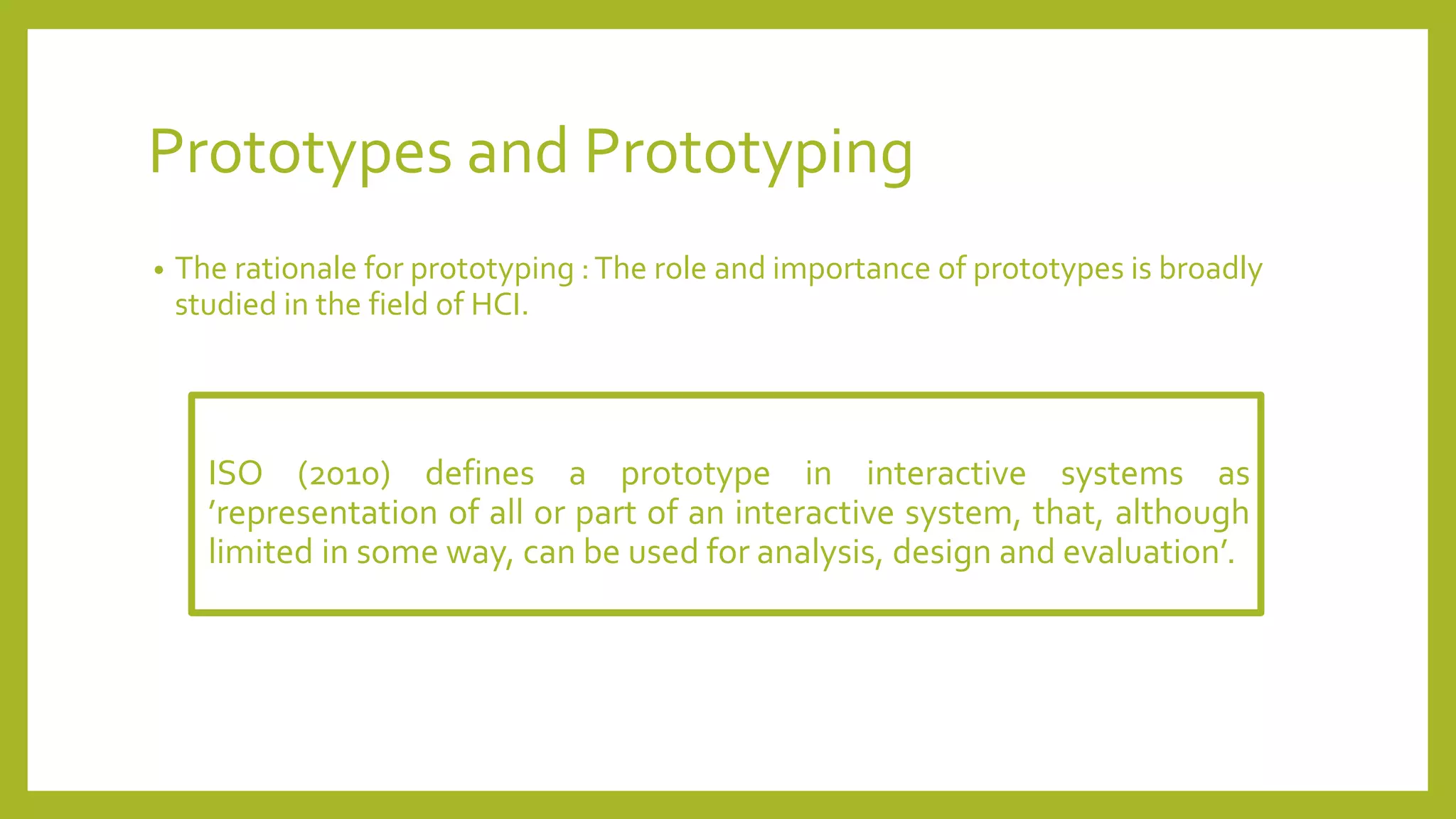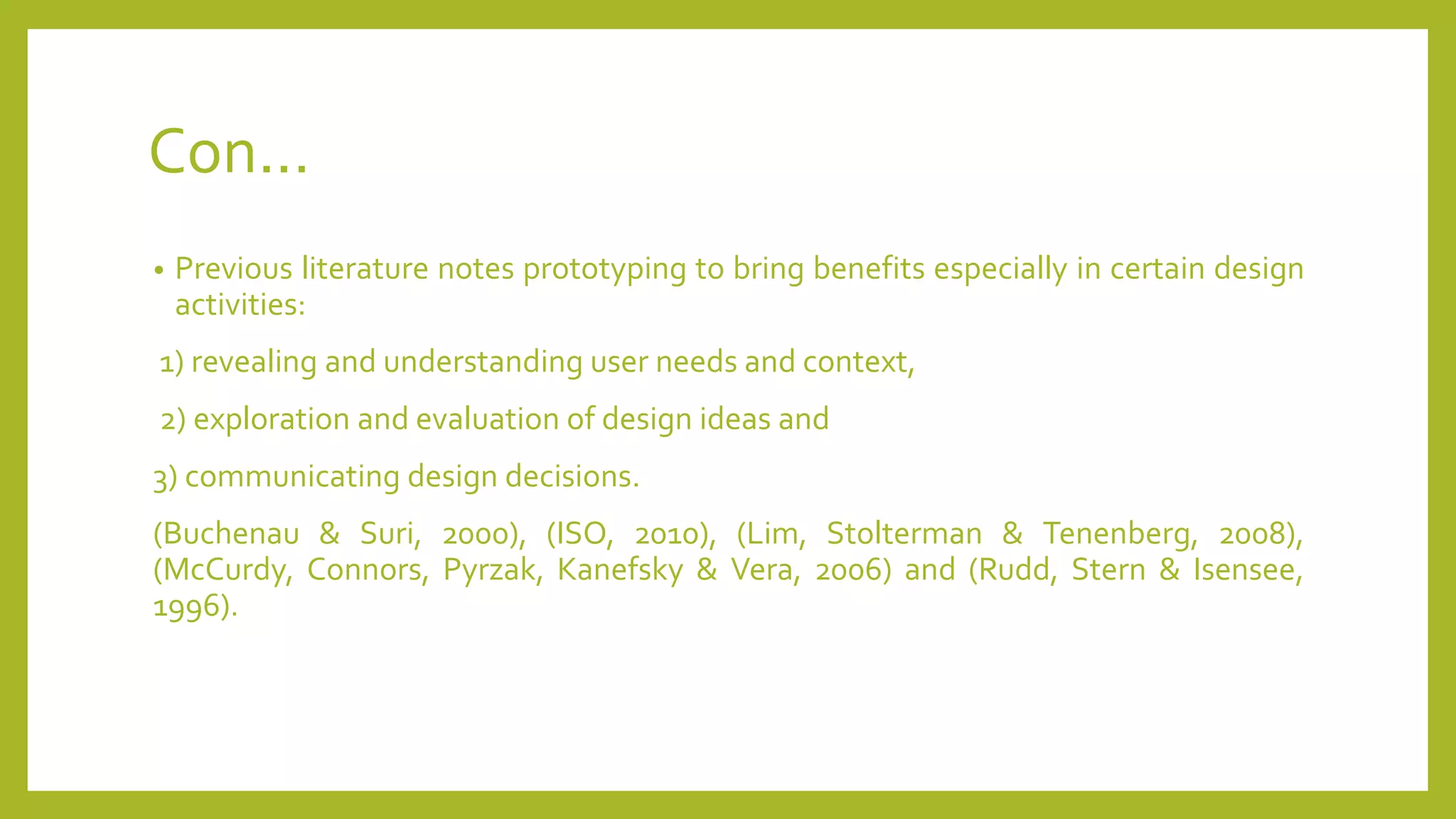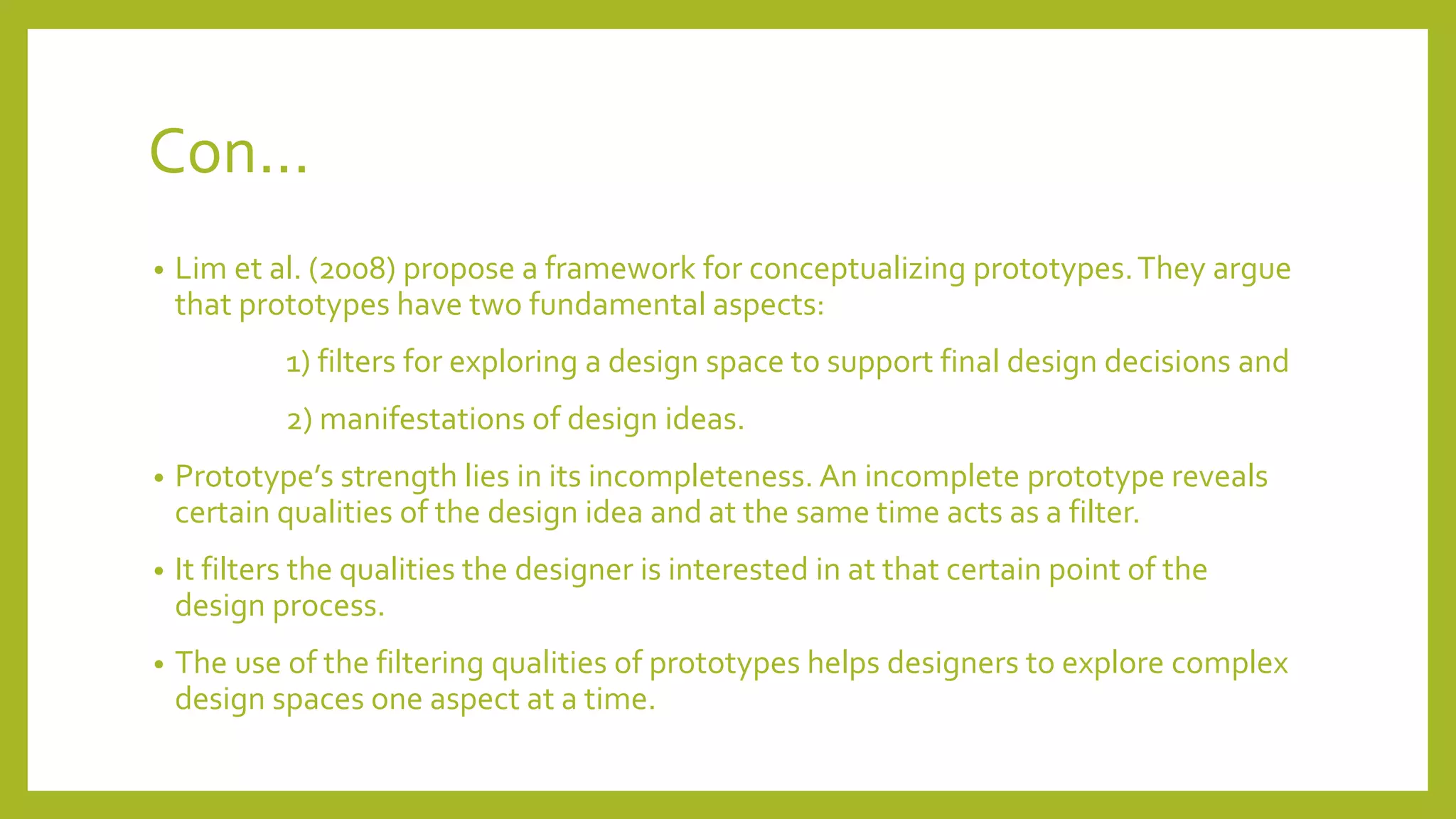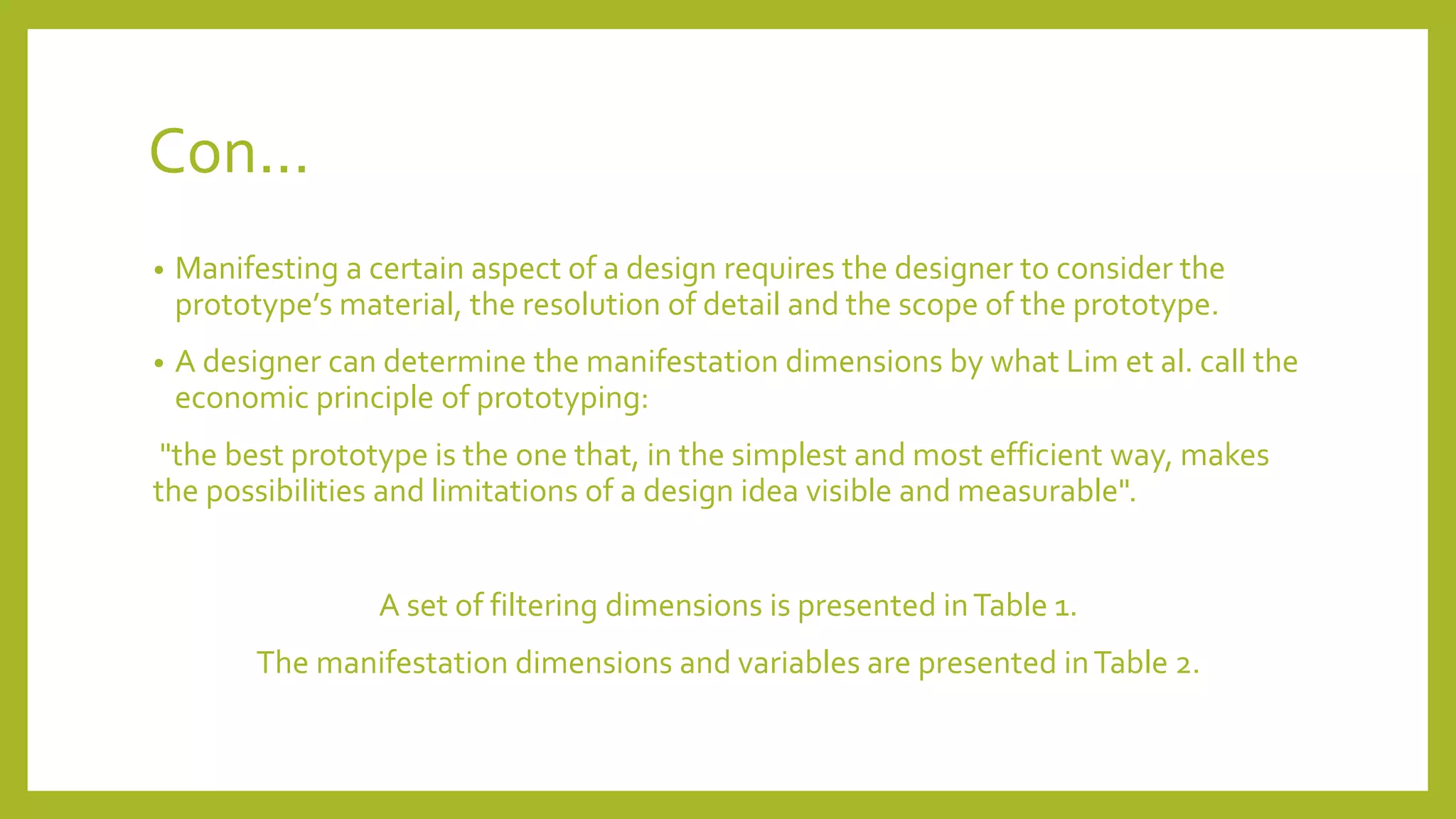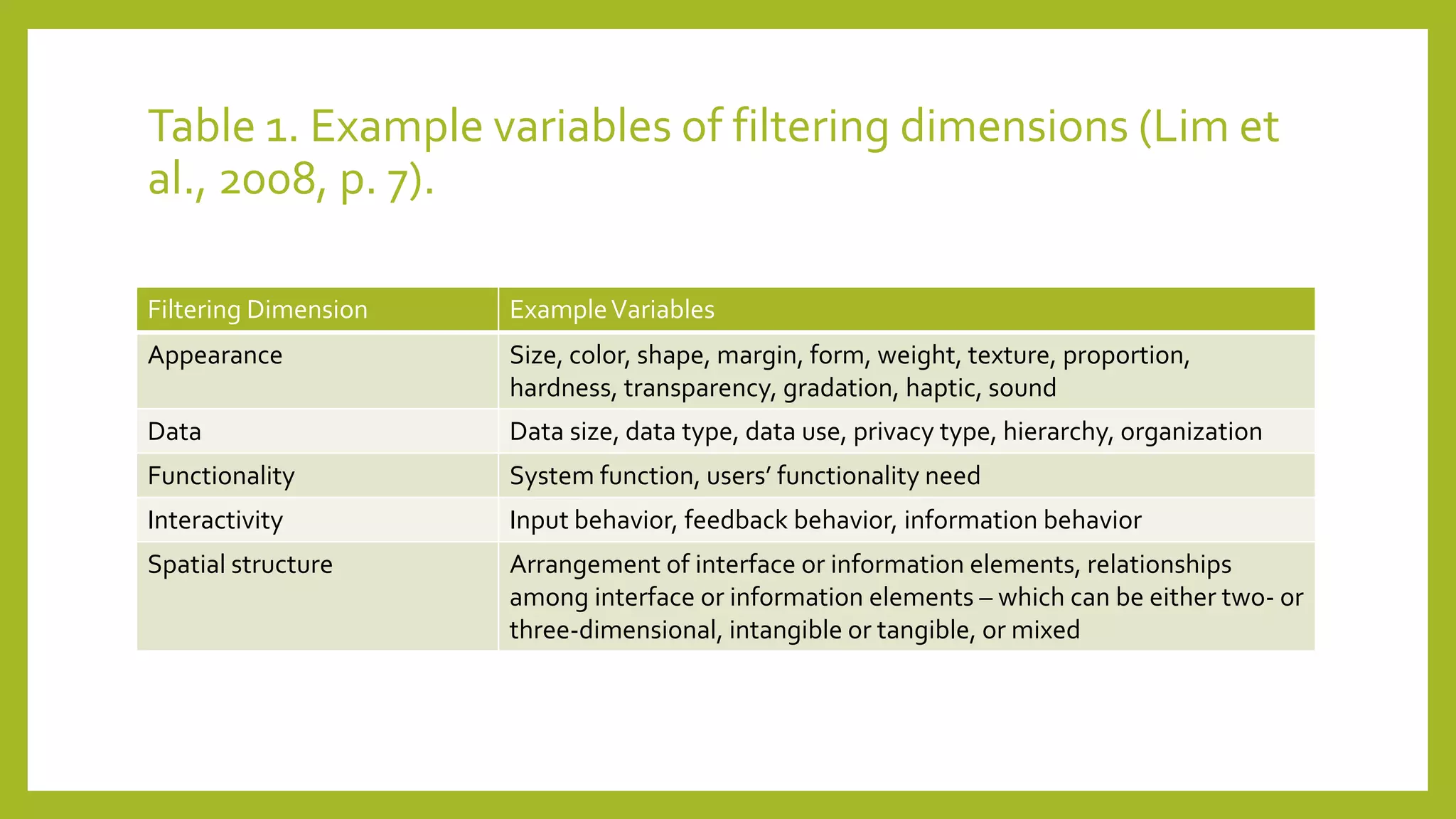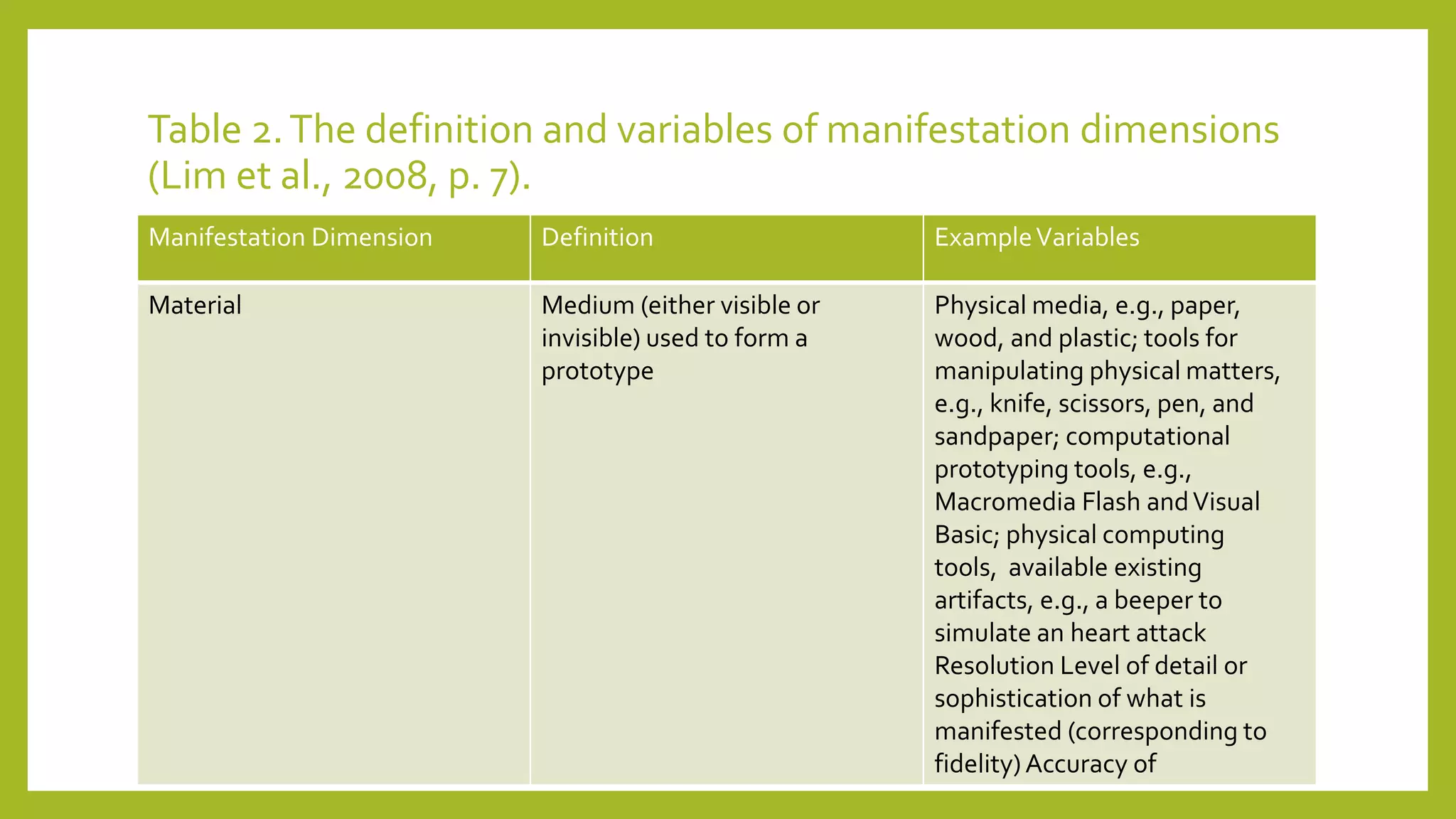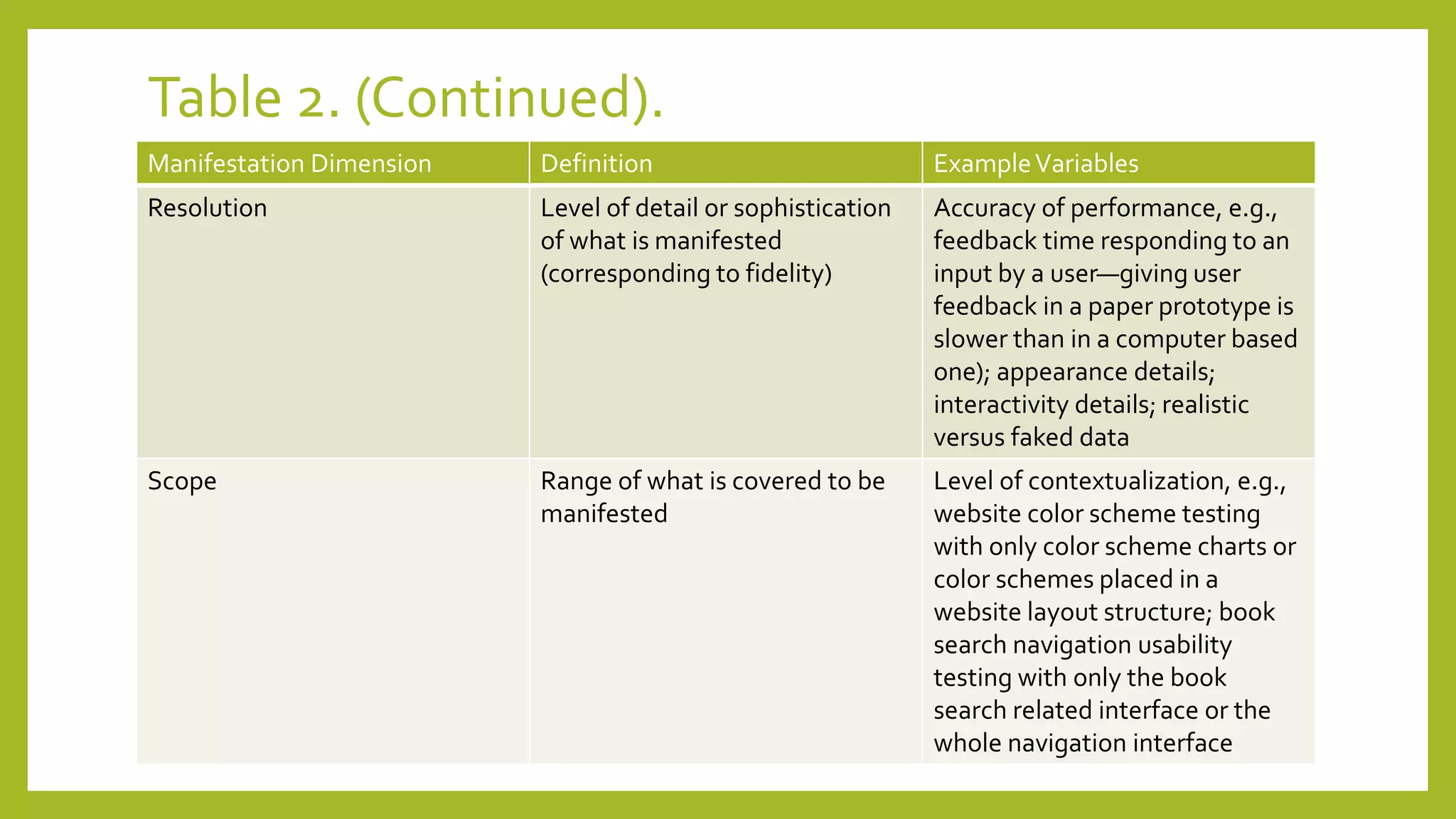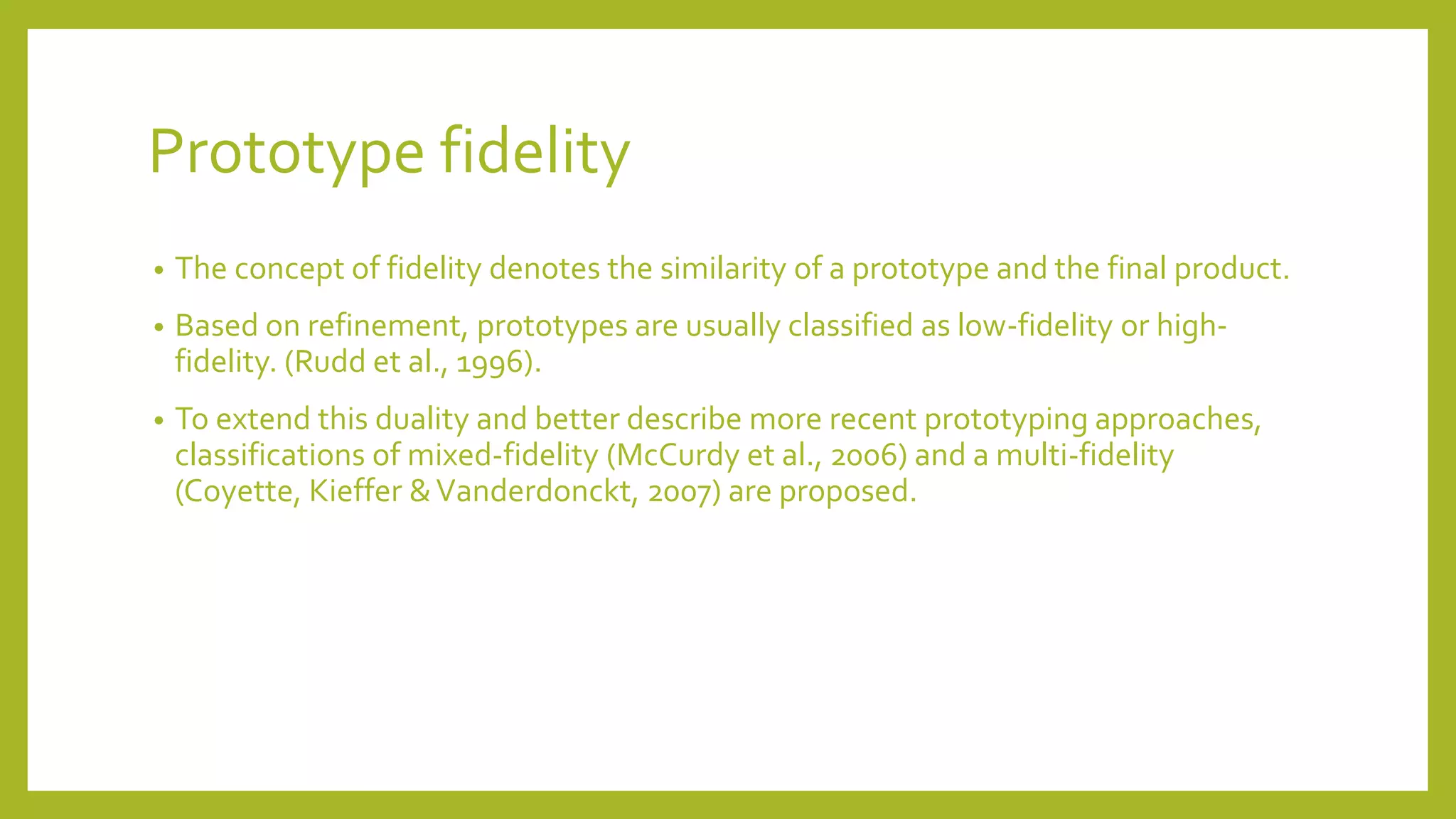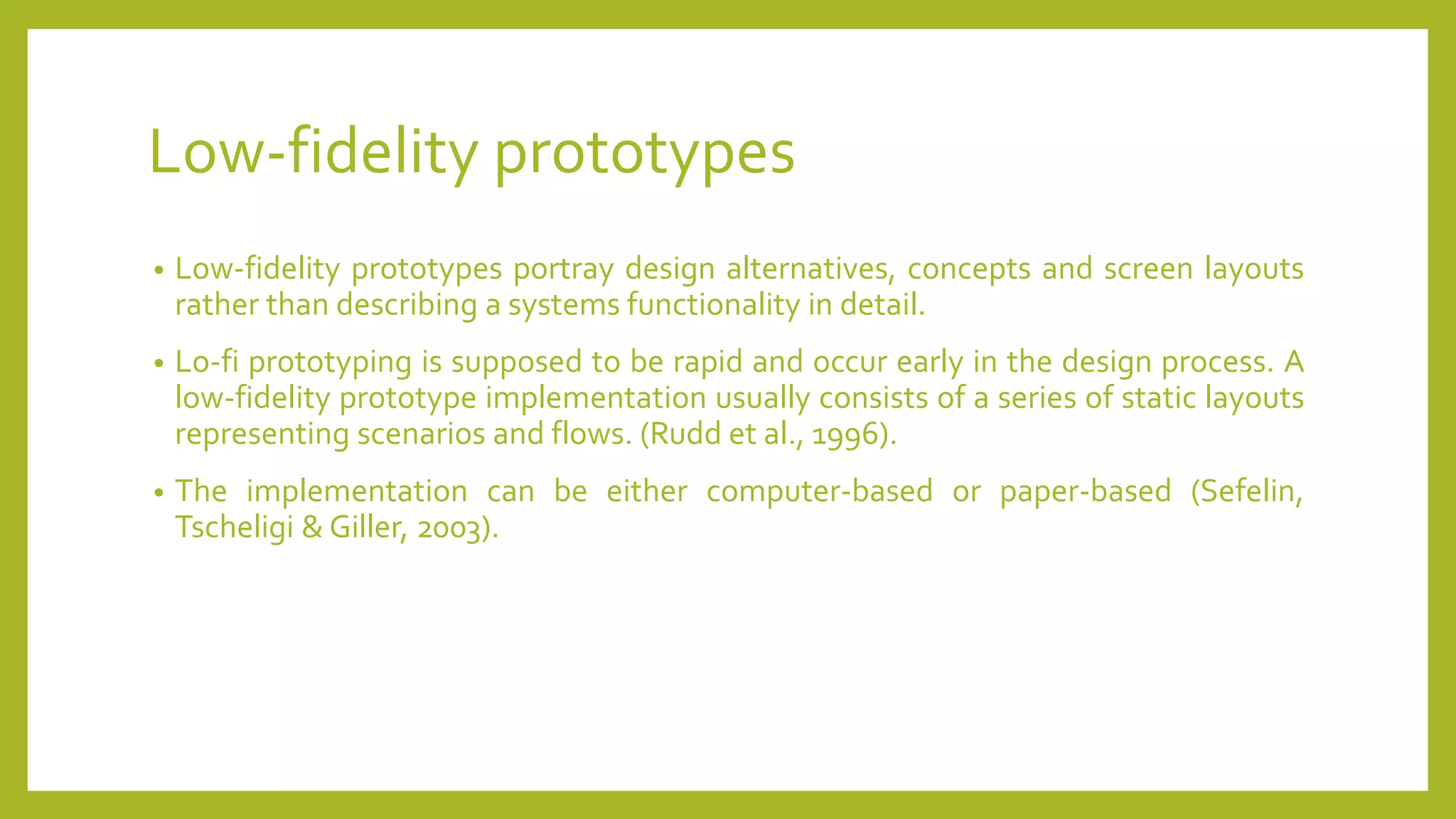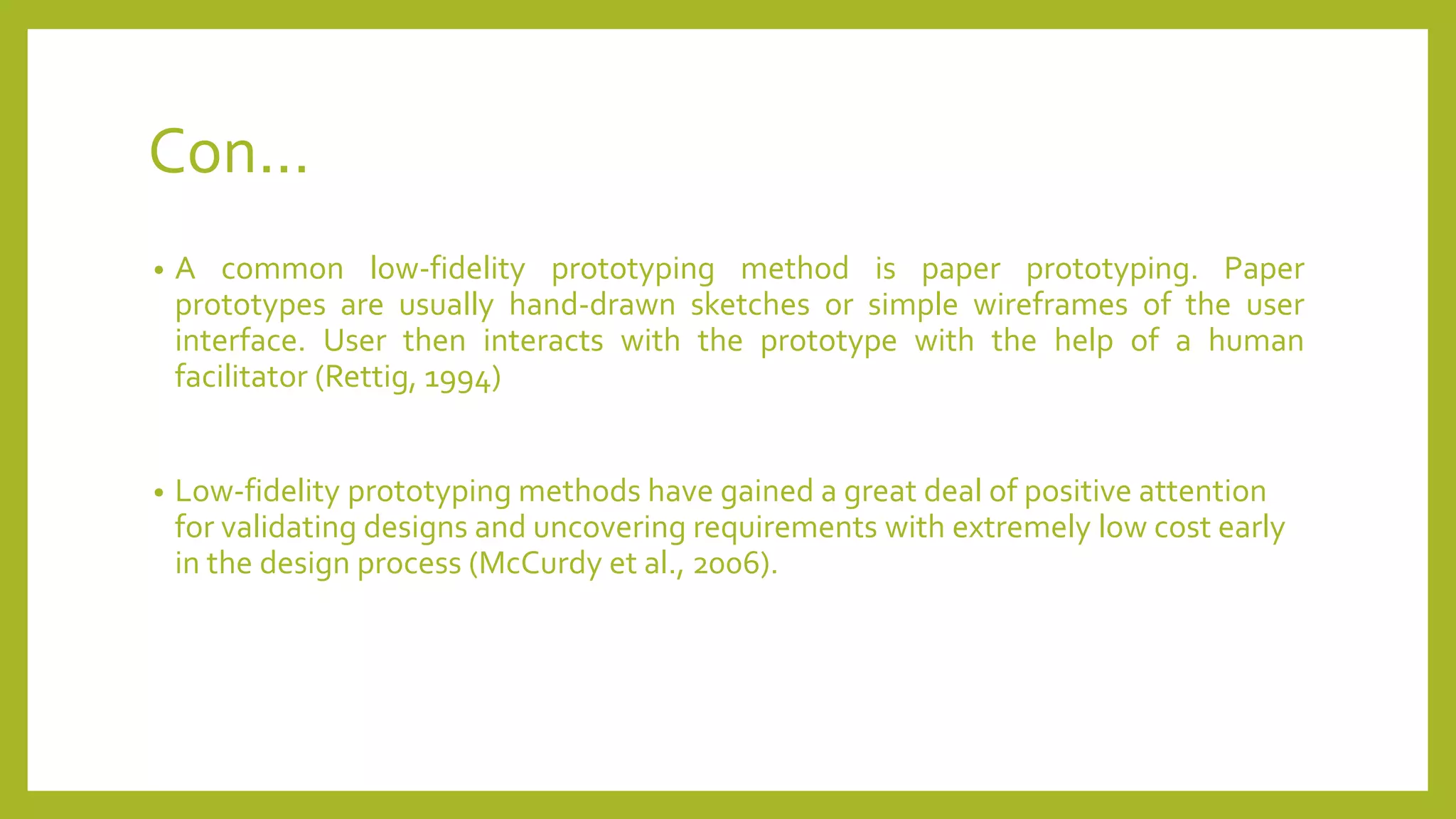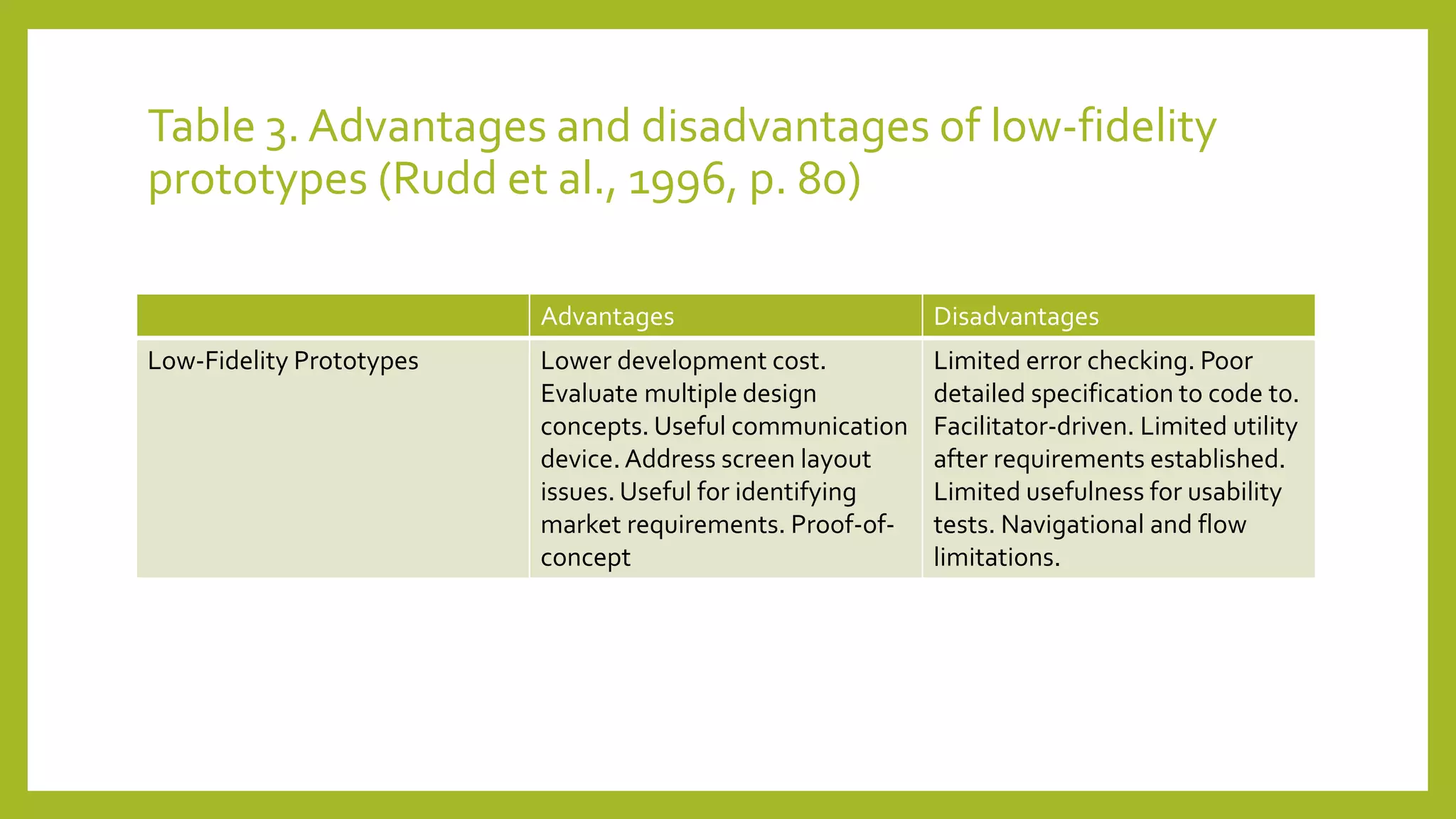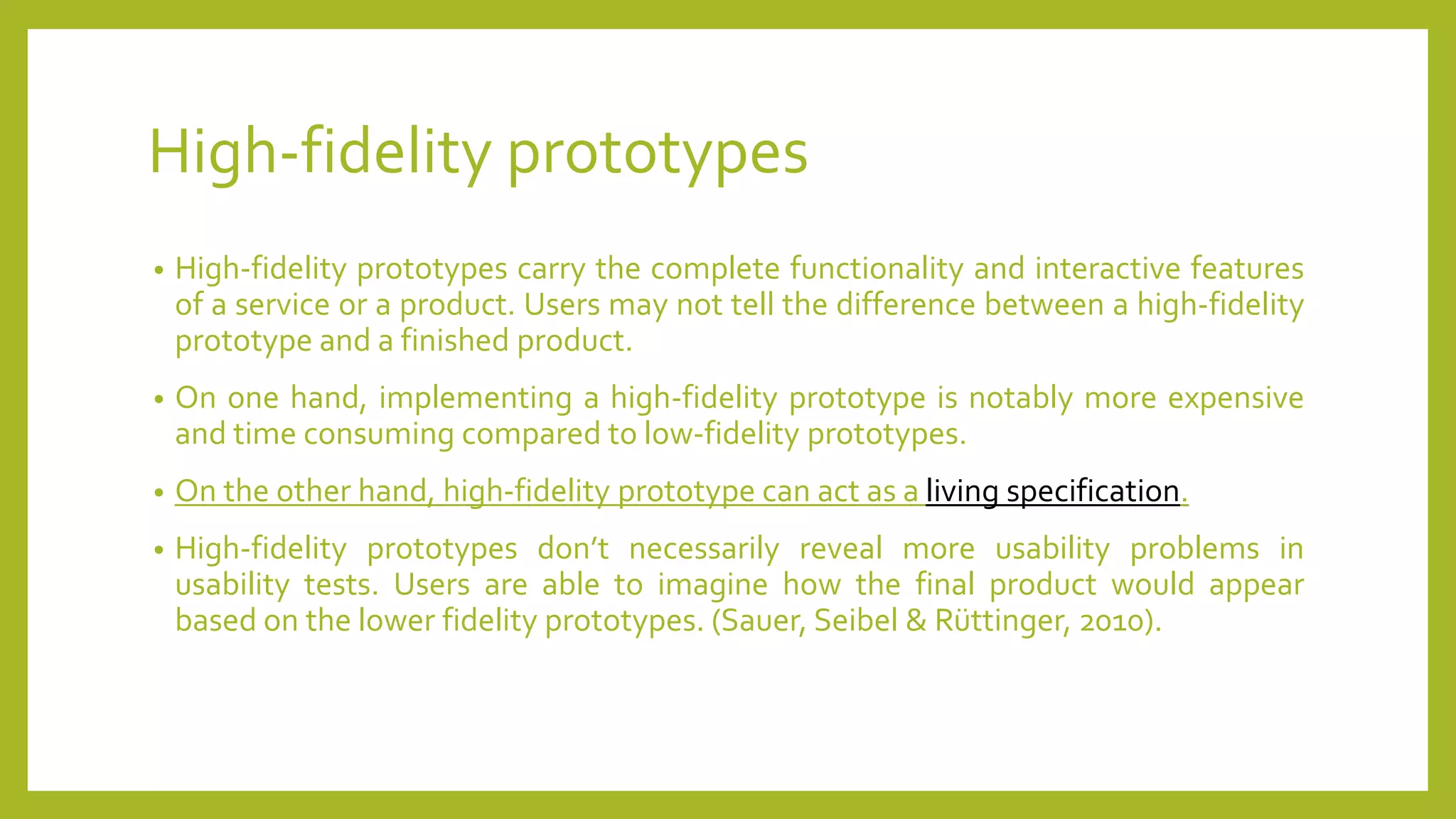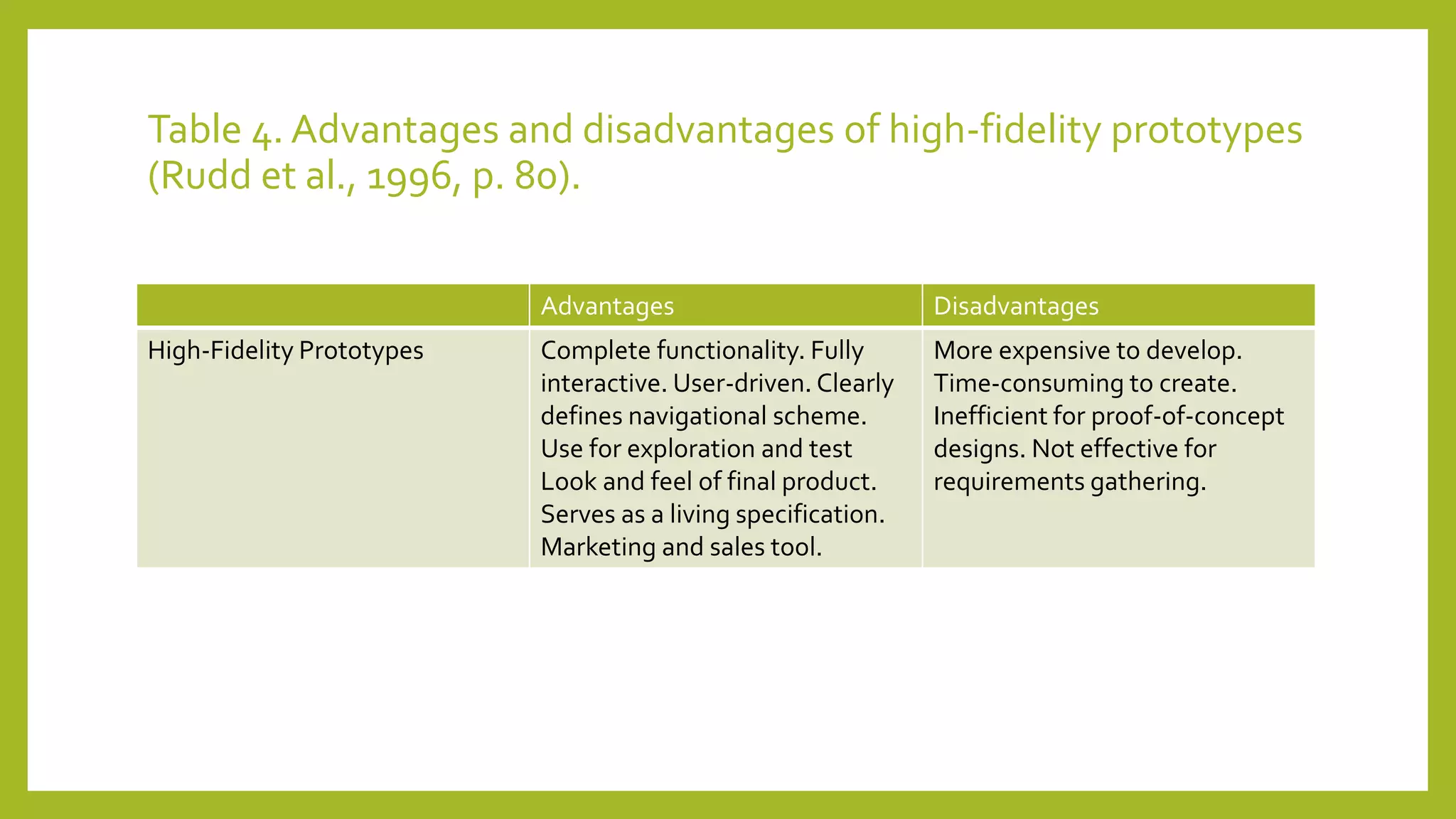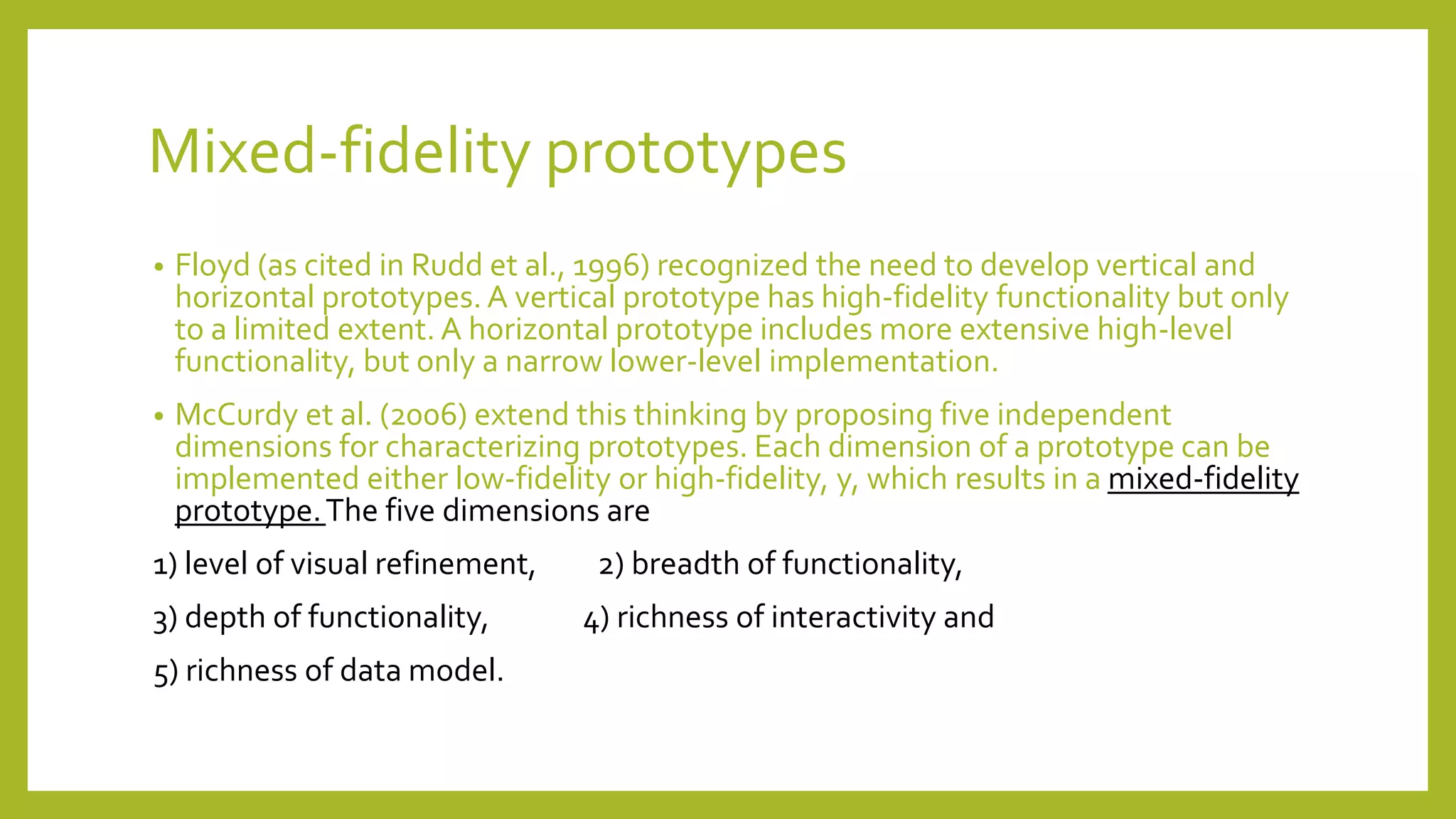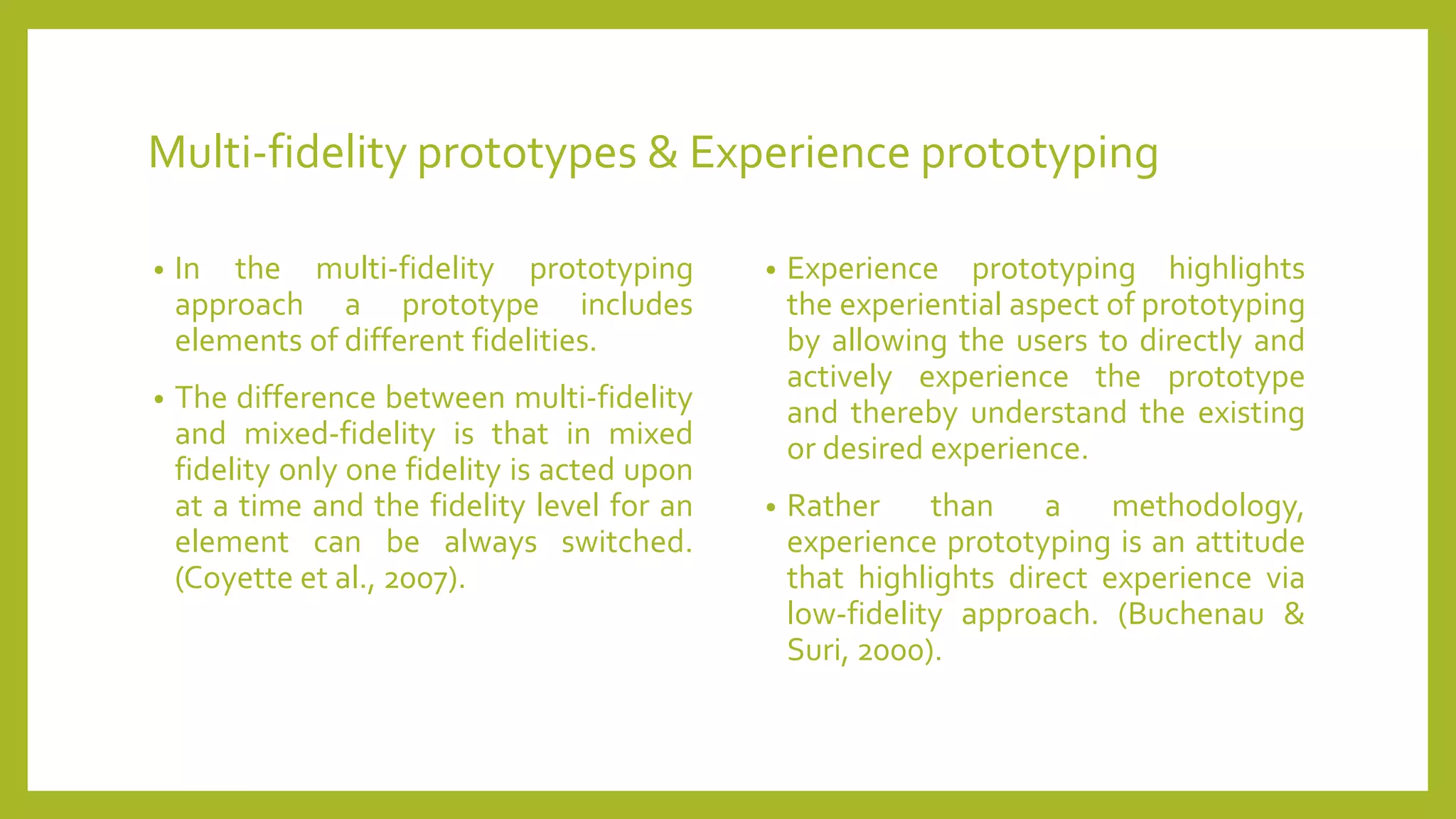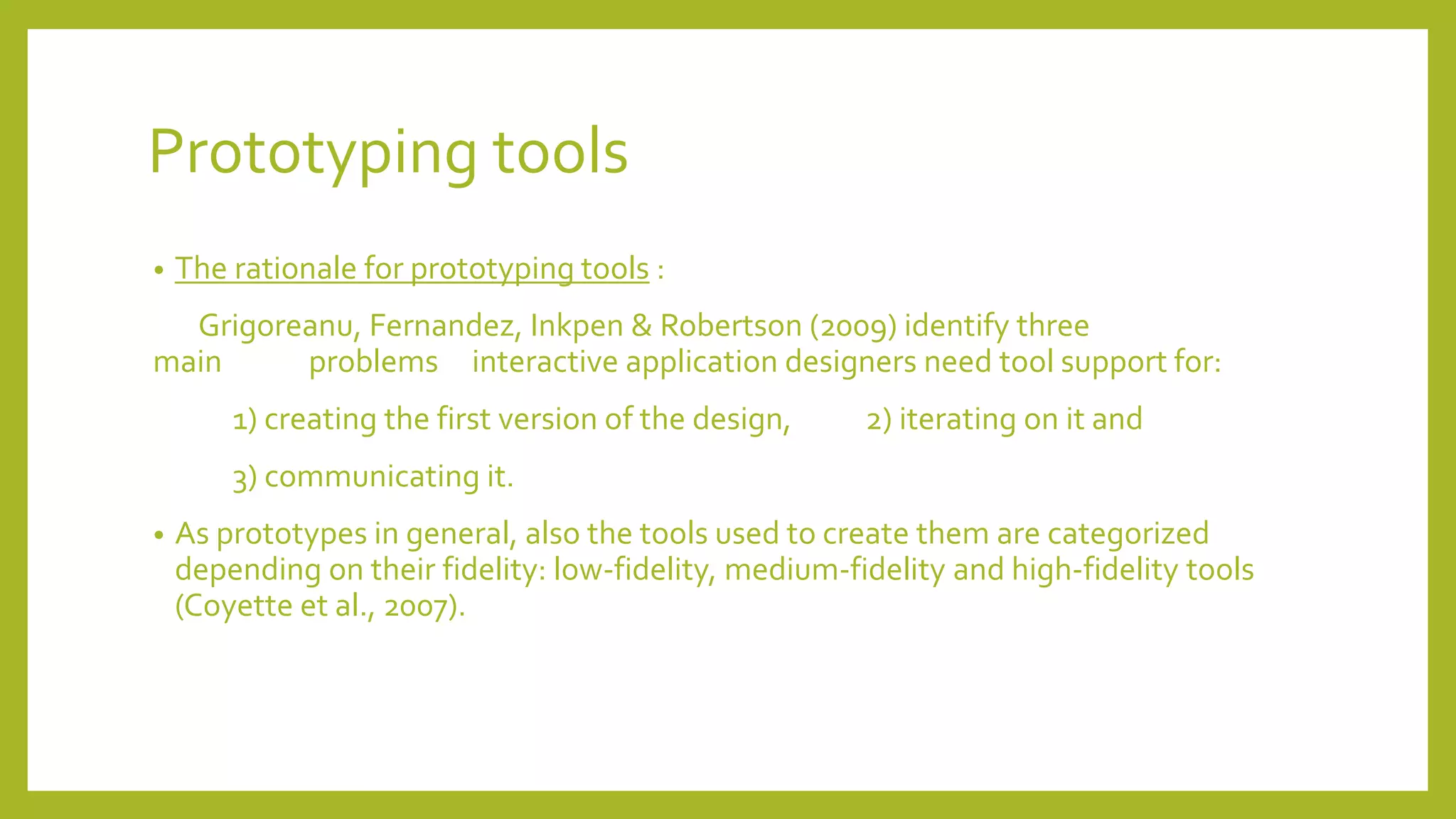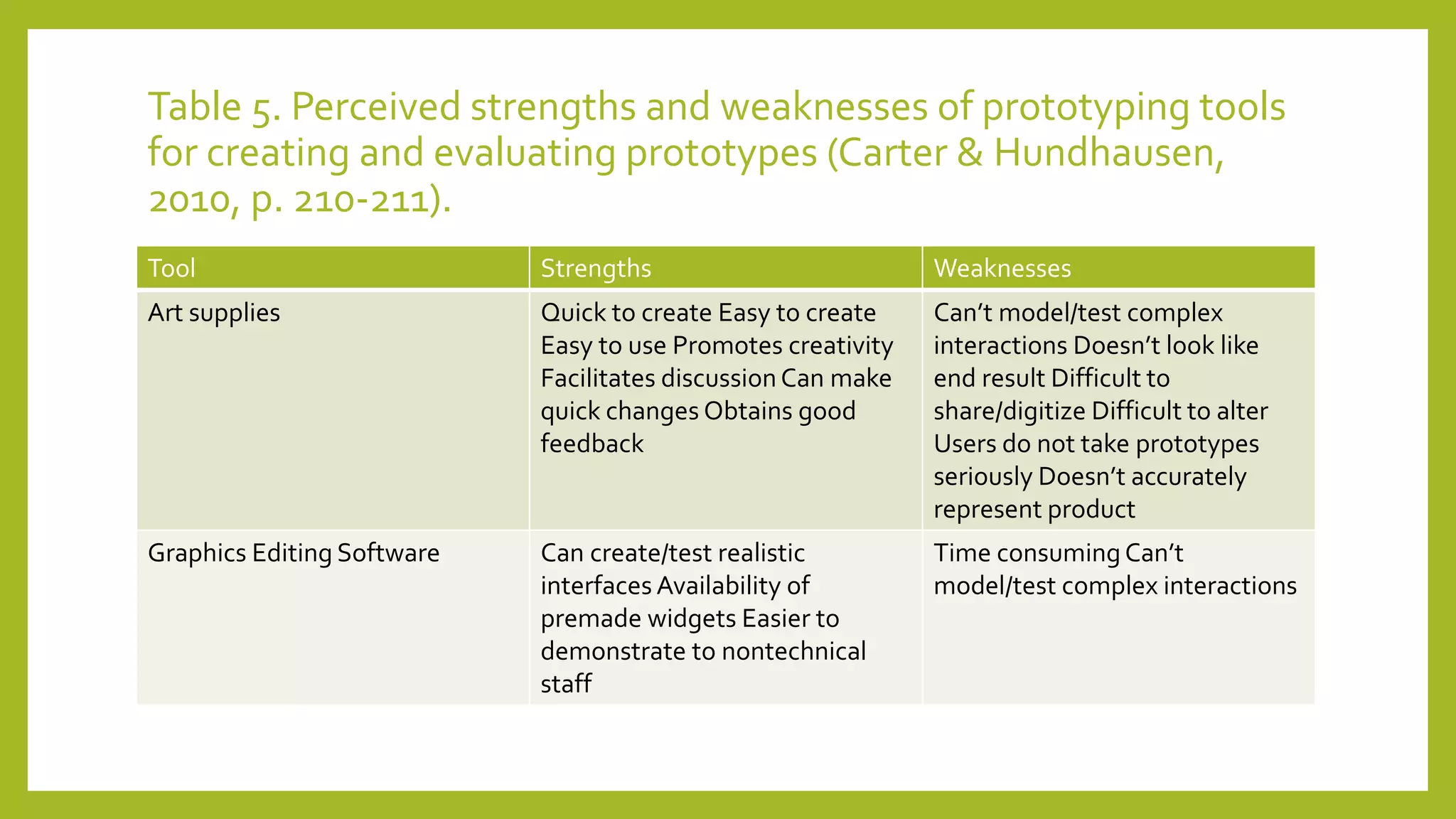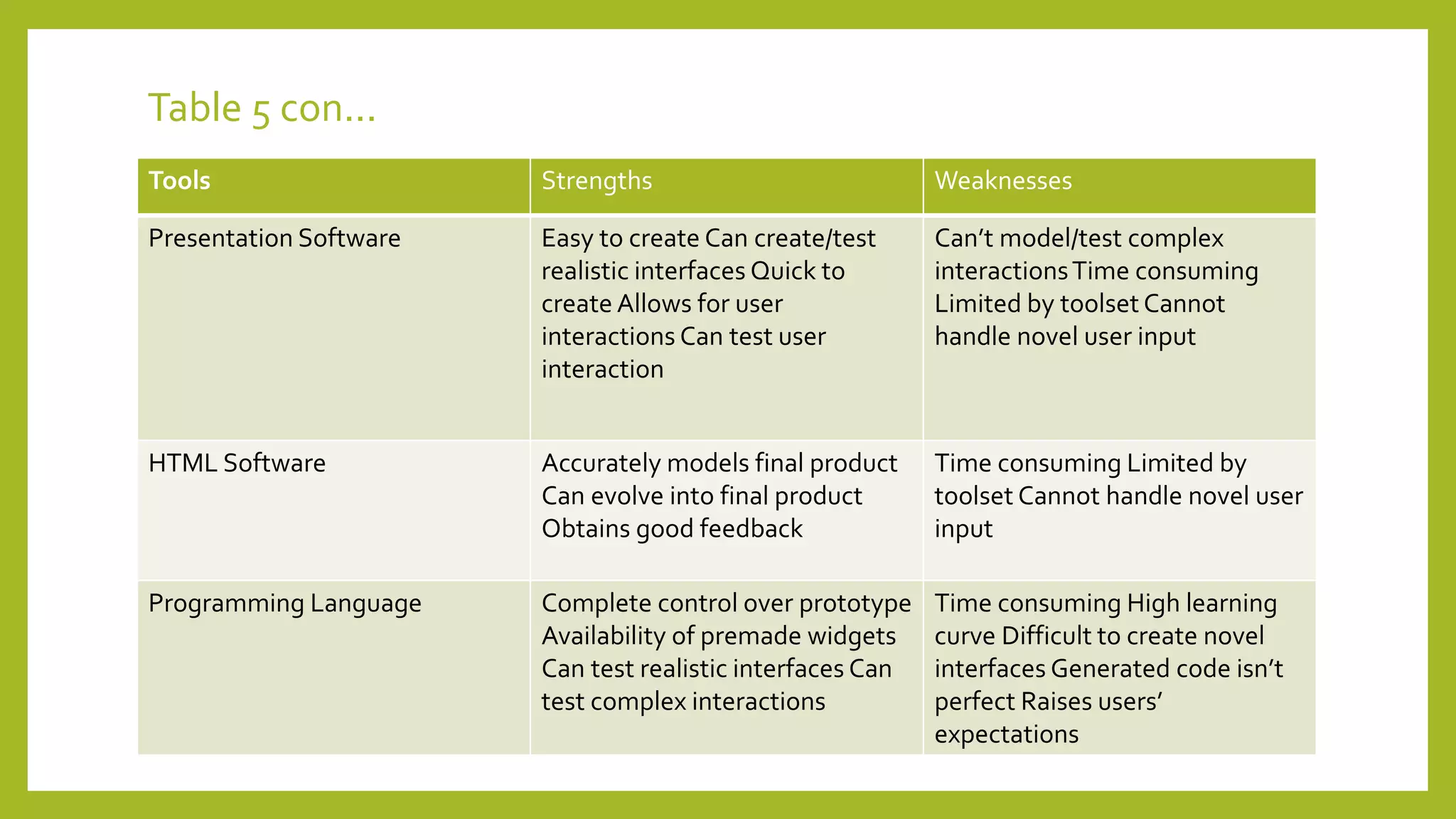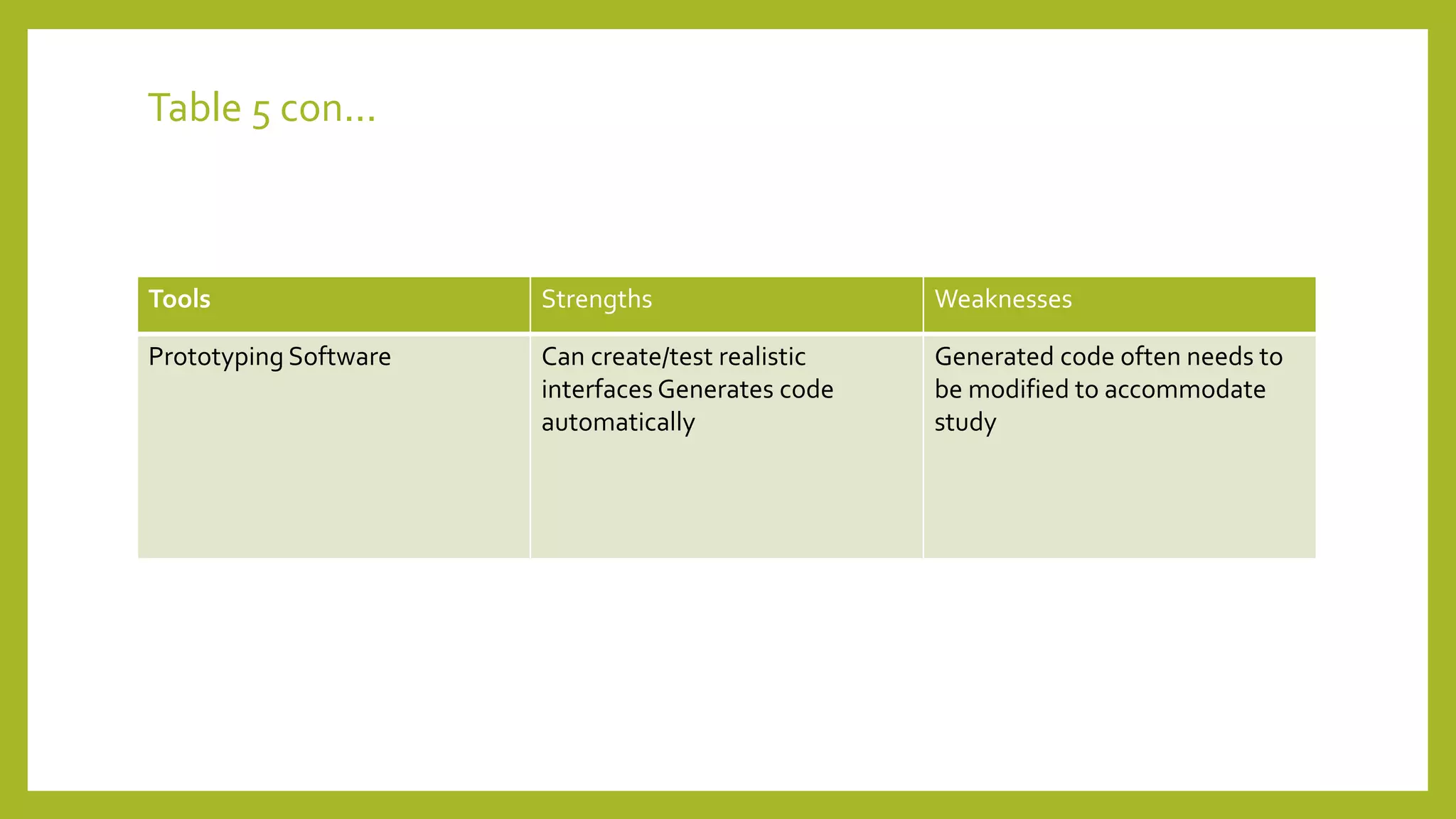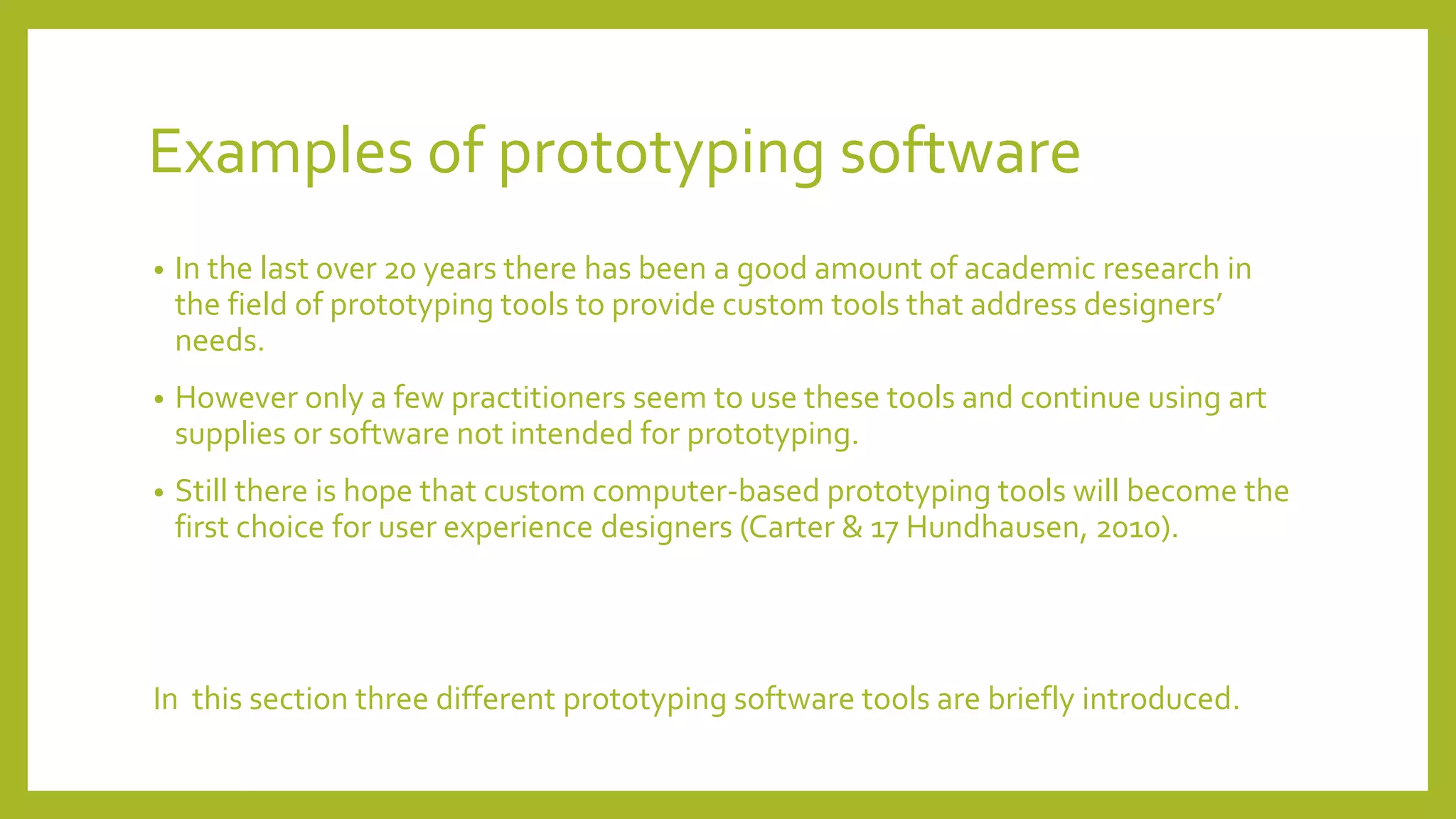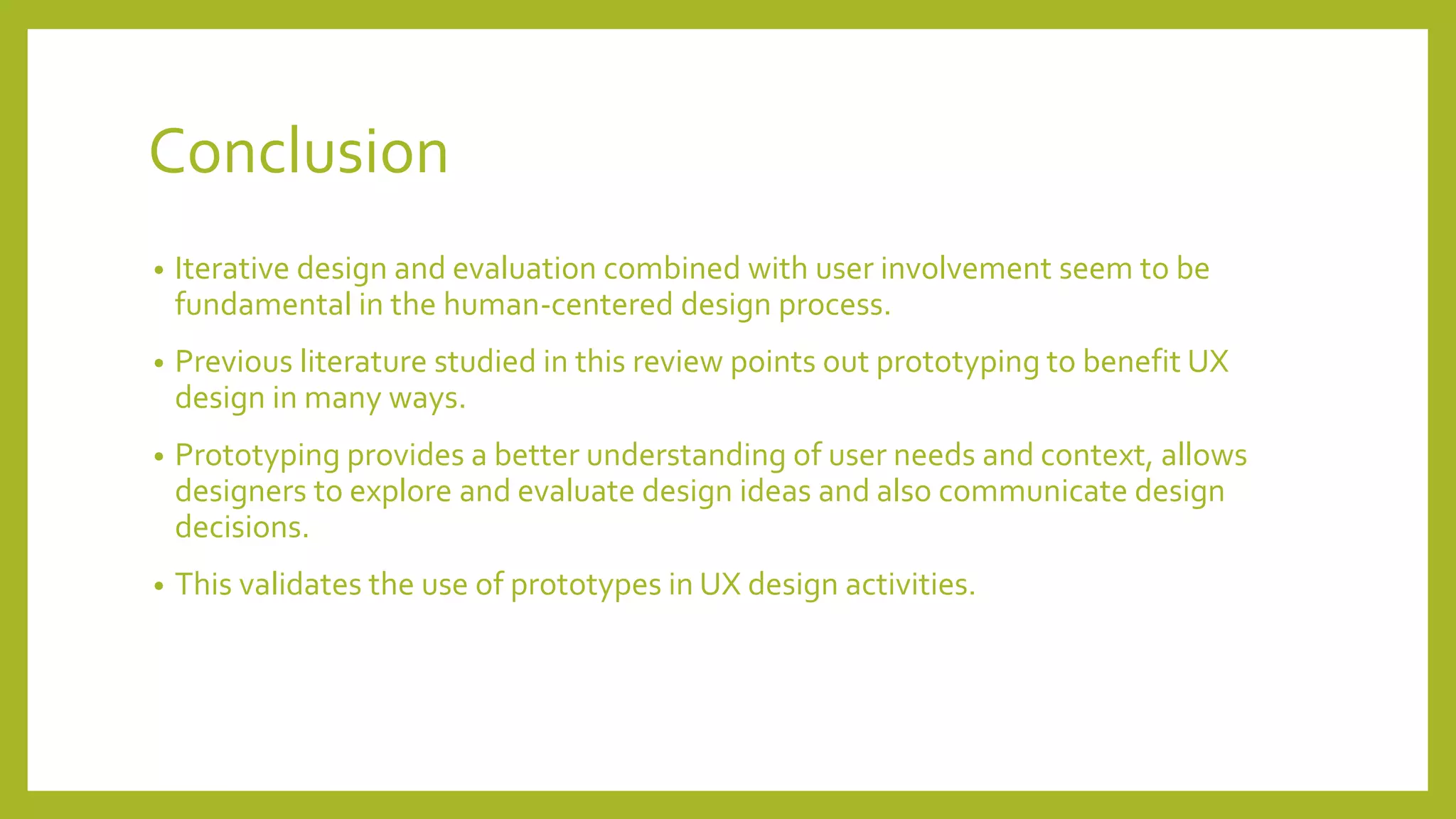This literature review discusses the importance of user experience (UX) in design, highlighting its role in both consumer and enterprise sectors, with examples like Apple's success and Avon’s software failure. It emphasizes various prototyping methods and their significance in the design process, noting classifications such as low-fidelity, high-fidelity, and mixed-fidelity prototypes. The review concludes that iterative design and user involvement are essential for effective human-centered design, as prototyping fosters a better understanding of user needs and aids in decision-making.

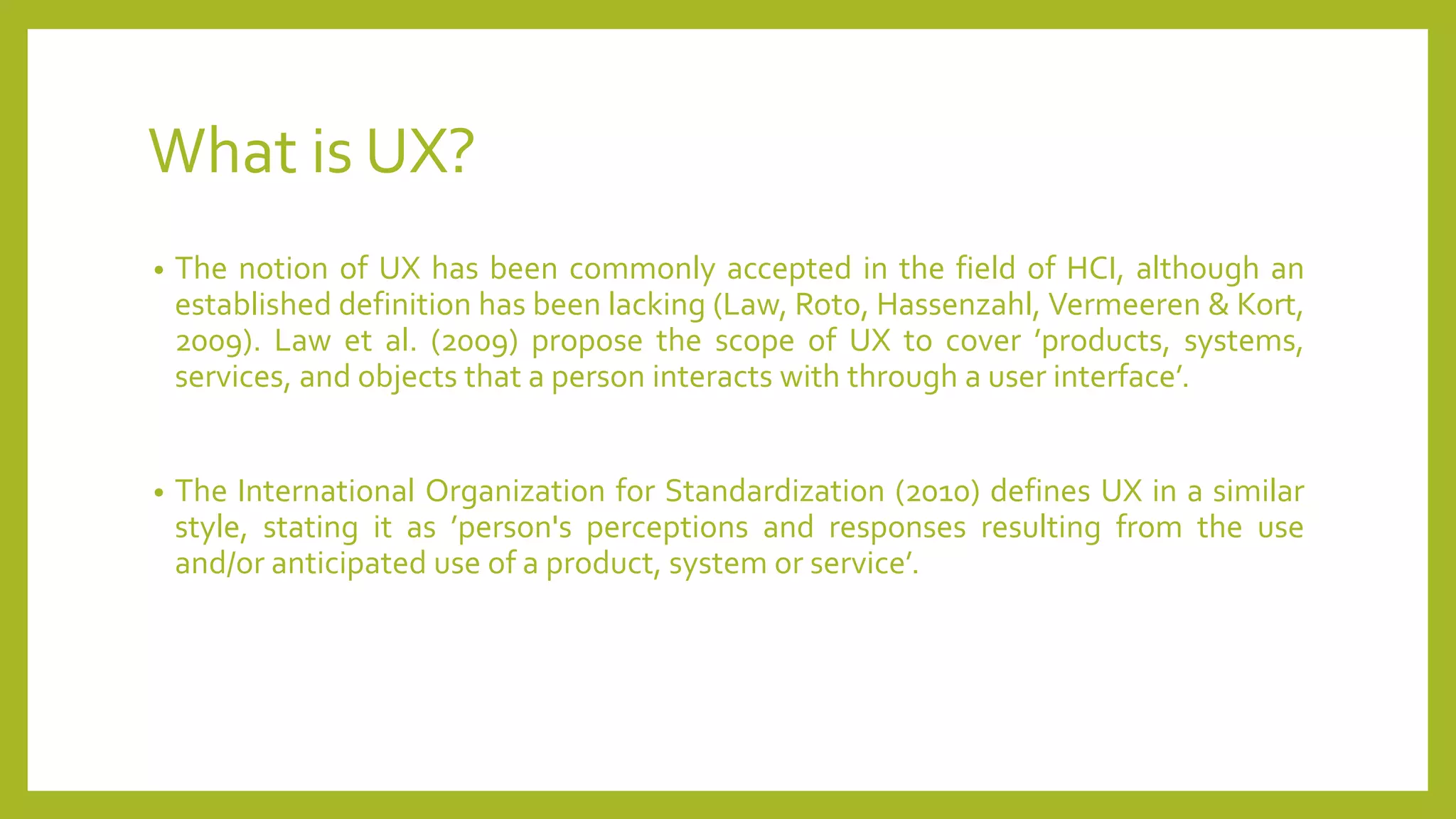
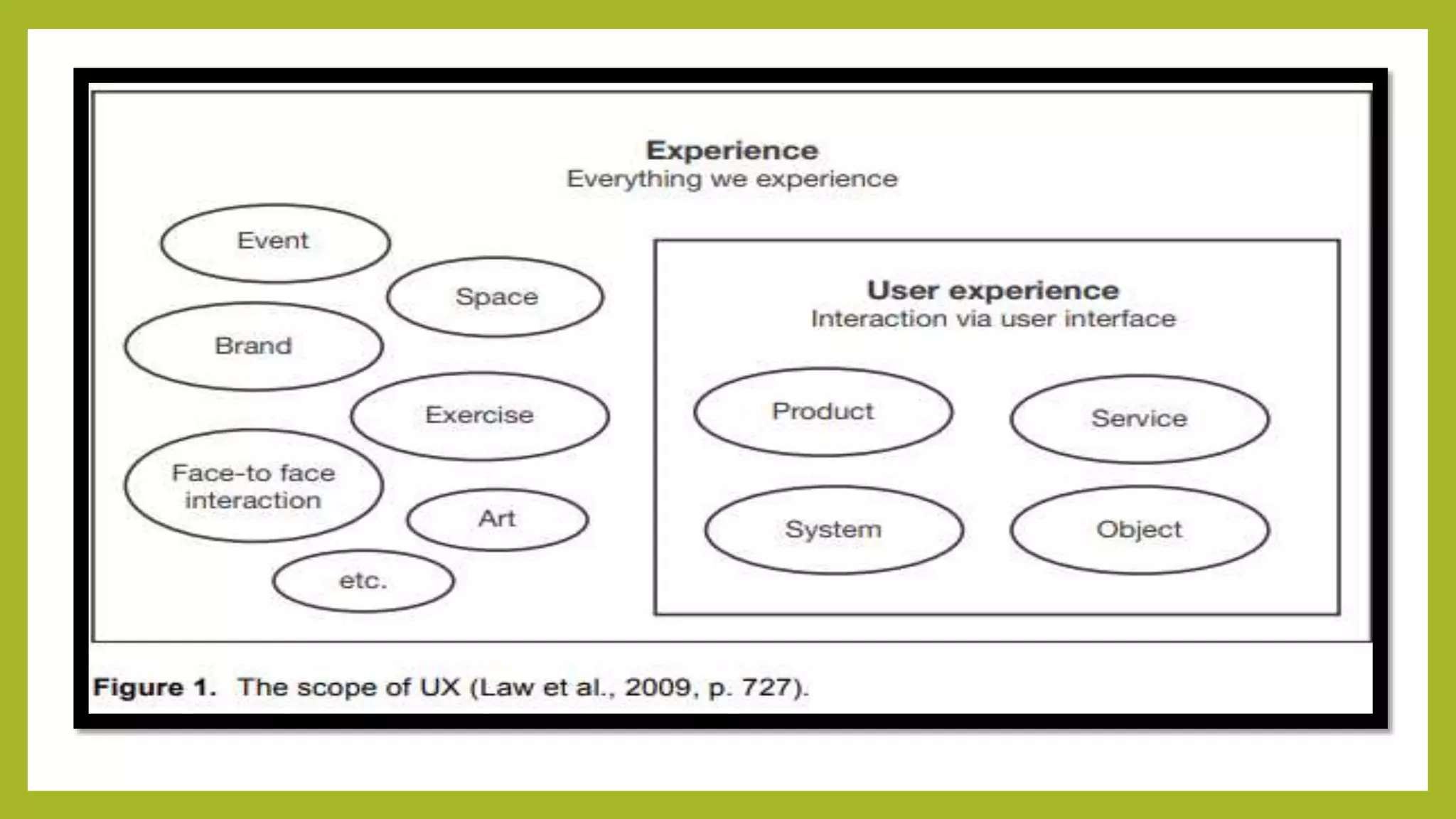
![UX Importance [ external ref : Joy Of UX]
• How did Apple become the most valuable company ever seen on the face of
the planet? By turning out great UX, for which its customers pay premium prices.
That's how important UX has become.
• UX is critical to the enterprise sector as well. In December of 2014, Avon had to kill
a new version of its order management software. The Wall Street Journal reported
that the company’s sales force of independent reps “found the new system so
burdensome and disruptive to their daily routine that many left Avon.”
• IBM recently announced that it was spending $100 million on its UX consulting
business, opening ten new labs worldwide and hiring 1,000 new workers.](https://image.slidesharecdn.com/4daswlbjqned20yidqxr-signature-d74541c2928a9d9454b6975e4f68dd4b7acedf826e18e1c7d7c8d1bf0333514d-poli-180629131327/75/Ux-prototyping-4-2048.jpg)
